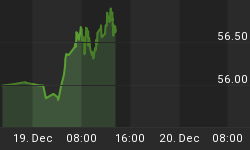Aluminum does appear to be having a surprisingly strong post-pandemic recovery — in China, at least.
Not that I am counting COVID-19 as beat. The pandemic is something we are going to have to live with, possibly for years to come.
Some metals, like steel and stainless, are showing signs of strain.
Aluminum, at least in the world’s largest producer and consumer, is going from strength to strength. (Whether you’re in the U.S., China, or elsewhere, make sure to follow these metal buying best practices, for aluminum or otherwise.)
SHFE aluminum makes gains
According to Reuters, the most-traded September aluminum contract on the Shanghai Futures Exchange (SHFE) last last week ended up 1.8% at 14,720 yuan a metric ton. This came after hitting a two-year high set in April 2018 of 14,805 yuan ($2,114.21) earlier in the session.
Supporting a picture of metal in demand, inventory levels also continued a relentless decline on the SHFE. Inventory dropped to 222,498 tonnes, down 58% from the 2020 peak in March.
By contrast, LME stockpiles were hovering around their highest level since April 2017, up 68% from mid-March at 1.63 million tonnes, Reuters reported.
The financial stock and finance trade continuing to hoover up unwanted aluminum and place it in LME store or off-warrant but hedged via the LME system.
Trading volumes surge
As a result, trading volumes have been stellar on the LME this half-year, up 12% in the January-June period — by far the strongest of the base metals.
The SHFE has been even more impressive with trading volumes, rising 28% after two straight years of decline as aluminum comes back into favor.
Local state governments are relaxing financing in the form of bond issuance. That relaxation will could produce an infrastructure boom in the fall.
Such a boom is likely to favor aluminum over heavier construction materials, like steel.
U.S. demand picks up
In signs that U.S. demand is picking up, imports of commodity P1020 ingot from Canada have encouragingly been falling, according to the Aluminium Association of Canada, decreasing on a monthly basis.
The AAC forecast a 30% drop exports of standard commodity ingot to the U.S. from June to July. These numbers confirm a downward trend, beginning with an initial reduction of 16% in June numbers over May (184,789).
This nearly 40% downward trend for the last two months indicates improving recovery in demand for value-added products.
Canadian smelters are adjusting production to accommodate for more demand for downstream products from processors and manufacturers. (Buyers importing from Canada should make sure to be prepared when going into negotiations.)
P1020 was deemed the most readily taken up by the stock and finance trade or most easily sold onto the LME as a last resort. As a result, it allowed smelters to continue output in the absence of downstream demand.
By AG Metal Miner
More Top Reads From Safehaven.com:
















